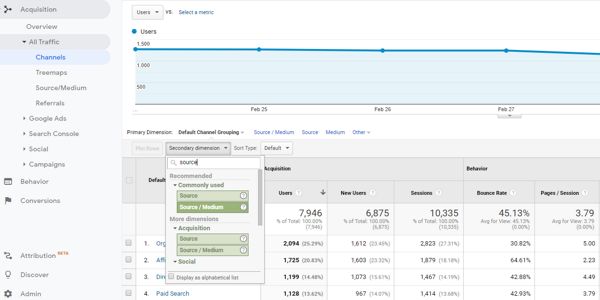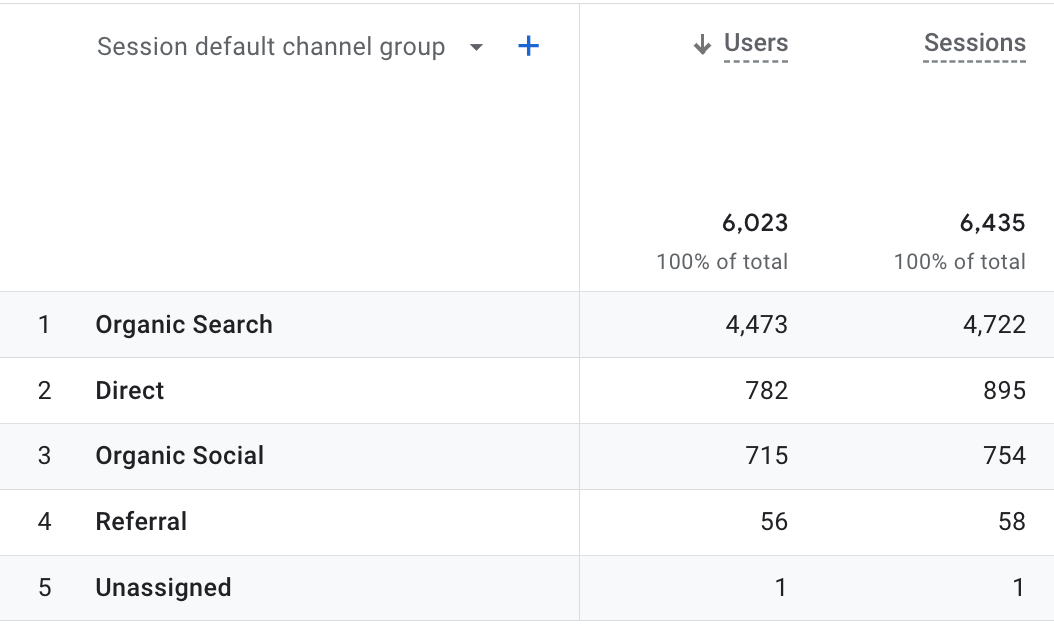Deep Study the 'Secondary Dimension' in Google Analytics: Everything You Need To Recognize
Deep Study the 'Secondary Dimension' in Google Analytics: Everything You Need To Recognize
Blog Article
Navigating the Midst of Additional Dimension in Google Analytics: A Detailed Expedition on Its Capability
Second measurements, though seemingly straightforward at very first look, nurture a wide range of untapped potential waiting to be used. As we get started on this journey to discover the nuanced functionality of secondary dimensions, we will uncover exactly how this function can illuminate patterns, introduce relationships, and inevitably pave the way for educated decision-making in the digital landscape (what is a “secondary dimension” in google analytics?).
Understanding Second Dimensions in Google Analytics

Recognizing how second measurements job is critical for leveraging the complete power of Google Analytics. These dimensions help you address much more intricate questions regarding individual habits and the effectiveness of your web site web content and advertising initiatives. You can use second dimensions to examine which devices or internet browsers are most typically used by visitors who make an acquisition, or to compare the bounce rates of different traffic resources. By incorporating primary metrics with secondary dimensions, you can obtain beneficial understandings that drive informed decision-making and optimization approaches - what is a “secondary dimension” in google analytics?.
Leveraging Secondary Dimensions for Information Analysis
Structure upon the fundamental understanding of just how second measurements enhance information evaluation in Google Analytics, the application of these added layers of details ends up being paramount in extracting useful understandings for informed decision-making and optimization techniques. By leveraging additional dimensions, analysts can dig deeper into the efficiency metrics by including even more context to the key dimensions, thus uncovering surprise patterns and correlations that might not appear initially look. This deeper degree of analysis enables services to better recognize user habits, recognize trends, and identify locations for renovation.
Additionally, second dimensions provide an even more thorough sight of the data, permitting for segmentation based on different specifications such as demographics, tools, web traffic resources, and more. This division helps with an extra granular evaluation, allowing services to customize their approaches and campaigns to specific audience segments for improved targeting and customization. Basically, the critical use additional measurements encourages organizations to make data-driven choices that drive growth and success in the digital landscape.
Advanced Techniques for Secondary Dimension Application
Discovering elaborate techniques to harness the full potential of second dimensions in Google Analytics elevates the depth and class of information analysis for strategic decision-making. One sophisticated technique for implementing additional measurements is the usage of customized measurements. In addition, incorporating secondary dimensions with innovative sections can supply even more granular insights by applying multiple layers of division to the data.
Interpreting Insights Through Secondary Dimensions

When translating understandings through secondary measurements, it is necessary to think about the context of the data and just how different measurements communicate with each various other. For instance, understanding which certain web traffic resources result in greater conversion prices or determining which tools individuals like for making acquisitions can offer actionable understandings for optimizing advertising and marketing projects and enhancing overall internet site efficiency. By meticulously taking a look at the information with secondary dimensions in mind, services can make website link informed decisions that drive significant outcomes and boost their electronic existence.
Optimizing Performance With Additional Measurements

One crucial means to enhance efficiency with additional dimensions is by segmenting information extra granularly. This enables you to separate details variables that may be affecting your metrics and gain a far better understanding of what drives success or failing in your digital efforts. By incorporating second dimensions such as 'gadget classification' and 'touchdown page,' you can identify which gadget kinds are most reliable for particular touchdown web pages, allowing you to customize your methods accordingly.
Furthermore, making use of secondary dimensions can assist you determine trends, patterns, and relationships that may from this source not be apparent when assessing information with key dimensions alone. This much deeper level of analysis can cause more educated decision-making and eventually boost the general performance of your site or electronic advertising projects.
Conclusion
Finally, additional measurements in Google Analytics play a crucial duty in boosting data analysis and giving much deeper understandings into internet site performance. By making use of sophisticated strategies and analyzing the data successfully, companies can optimize their techniques and boost overall efficiency. Understanding the performance of second dimensions is crucial for making notified choices and driving success in the digital landscape.
By leveraging additional dimensions, experts can dig deeper right into the performance metrics by including more context to the primary measurements, therefore discovering covert patterns and correlations that might not be evident at very first glance. One sophisticated technique for applying second measurements is the usage of customized dimensions.Having actually mastered innovative methods like custom-made measurements and regex for secondary measurement application in Google Analytics, the following critical step is translating the beneficial understandings acquired with these advanced data segmentation methods. Interpreting insights through additional dimensions includes analyzing the relationships in between the key and secondary measurements selected, uncovering patterns, patterns, and connections that might not be quickly obvious when looking at the data in its totality.When translating understandings with second measurements, it is vital to consider the context of the data and how various dimensions communicate with each other.
Report this page